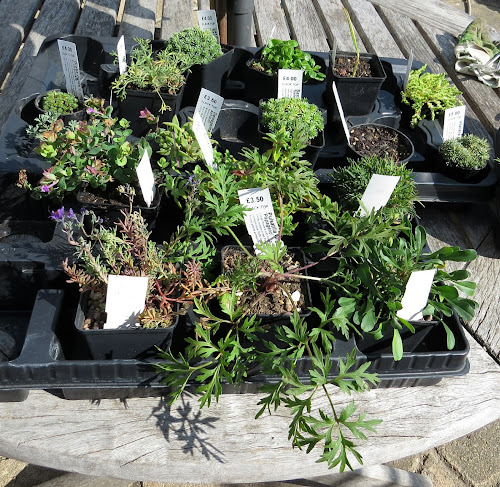Saturday, September 5
There is a disused old road near Harpley cottages which requires a lack of traffic both ways to access as it involves crossing a double white line near the top of a hill. It's a favourite of ours as there are wide verges of wild flowers, untended hedges and wildflower planted field edges. Excellent for all wildlife. We often see Brown Hares here and Red Kites frequent the ridge.
Yesterday was amazing for raptors. As soon as we stopped, at the first open entrance, one Red Kite and two Marsh Harriers appeared above the ridge, interacting whilst soaring, rising and falling. As they drifted away, four Buzzards appeared, doing the same thing, seemingly enjoying the lovely sunny morning. Then, another Red Kite joined the party.
 |
| One Red Kite and two of the Buzzards |
We'd already seen two Red Kites - and were to add another three Buzzards - before reaching Abbey Farm. Supporting cast, one Kestrel.
Not a surprise when I think about it, still a disappointment though, Sculthorpe Mill Hotel/restaurant has closed. Another Covid19 lockdown victim. Greene King has yet to make up its mind (notice on the door) as to what the future holds for this very attractively situated hotel. The car park was cordoned off, but there was still room to pull in so that we could look at the mill race and the surrounding area. A family of Mute Swans and the ubiquitous Goldfinches, the only birds on view this morning.
Driving back along Valley Farm lane, Pam noticed a bird on the wires opposite the barn. A Spotted Flycatcher. Only the second we have seen this year. Does that mean that they have bred in this area or was it a passage migrant?
The high tide was on its way out when we crested the rise at Snettisham. A couple of photographers crouched on the tideline alerted us to the presence of a smattering of Ringed Plovers on the stony edge to the tideline.
Whilst watching, the group increased
dramatically as Turnstone and Sanderling and more Ringed Plovers
settled. Effectively camouflaged, huddled down amongst the stones. Very
reminiscent of the spring 'Littles' on Ard an Runair beach on North
Uist.
The tide here recedes at Usain Bolt pace, taking the birds further and further away. Large groups congregated along the shore, a constant flux of incoming and departing birds.
Others sat on muddy areas, not feeding, just loafing. The many hundreds of Oystercatchers like a dark oilslick, the Redshank a haze of bright orang/red legs. The Knot have yet to arrive in their thousands, the fore-runners well represented.
I never tire of this spectacle.
A few Common Terns remain on the end pool's islands, along with hundreds of Greylag Geese, a few Cormorants and ducks. One sleeping Spoonbill and two Little Egrets at the far end.
Scoping again on our return journey, I saw a Little Stint, a Grey Plover, Curlew, Black-tailed Godwit, and about fifty Golden Plover.
Hurrying through Hunstanton and bypassing Wells, we regretted entering Brancaster Staithe car park. It was heaving. A few quick photos of a feeding Little Egret and a Black-tailed Godwit before leaving as quickly as was possible.
The last stop was to view North Point Pools from our customary vantage point. Another mass of Greylags and eclipse ducks, predominantly Mallard, but Wigeon have returned from their breeding grounds. A few Teal made their diminutive presence known, swimming fast away from aggressive Mallard. About a dozen Ruff, a few of them this year's birds, one of them a moulting white male.
Time to go home and open the moth traps before the England/Iceland match at 5.00 p.m.(1-0 win after a pretty ordinary performance. A Sterling penalty on 90 minutes, a penalty miss by Iceland a few minutes later, and both sides down to 10 men).
Another poor moth trapping, yet with a few good examples.One trap contained what we initially thought was an unusual for us, shield bug. Pam did some initial insect book perusing, whilst I investigated on line. Pam narrowing it down to being a member of the Leatherbug family. We thought that it could be a Narrow-shouldered Bug I sent the photo to A. Duff and his opinion is that it's a Box Bug. Now confirmed by IRecord.
Gonocerus acuteangulatus Box Bug
Family: Coreidae
A relatively large reddish-brown squashbug, distinguished from the commoner Coreus marginatus
by the narrower abdomen and more pointed lateral extremities of
the pronotum. Nymphs have a green abdomen.
Historically
very rare (RBD1) and known only from Box Hill in Surrey, where it feeds
on Box trees, this bug is expanding its range and now occurs widely in
the south-east of England and beyond. It is exploiting different foodplants,
and has been
found on hawthorn, buckthorn, yew and plum trees.
Three nore new for 2020 moths (NFY) were, a Latticed Heath
a Small Dusty Wave
and a Red Underwing - a different species from the Dark Crimson Underwing caught a week or so ago.
Two more Orthoptera species fell to Pam's eagle eye. Well. we think that they're different. So difficult to identify for us clueless amateurs. This is one of them.




























































